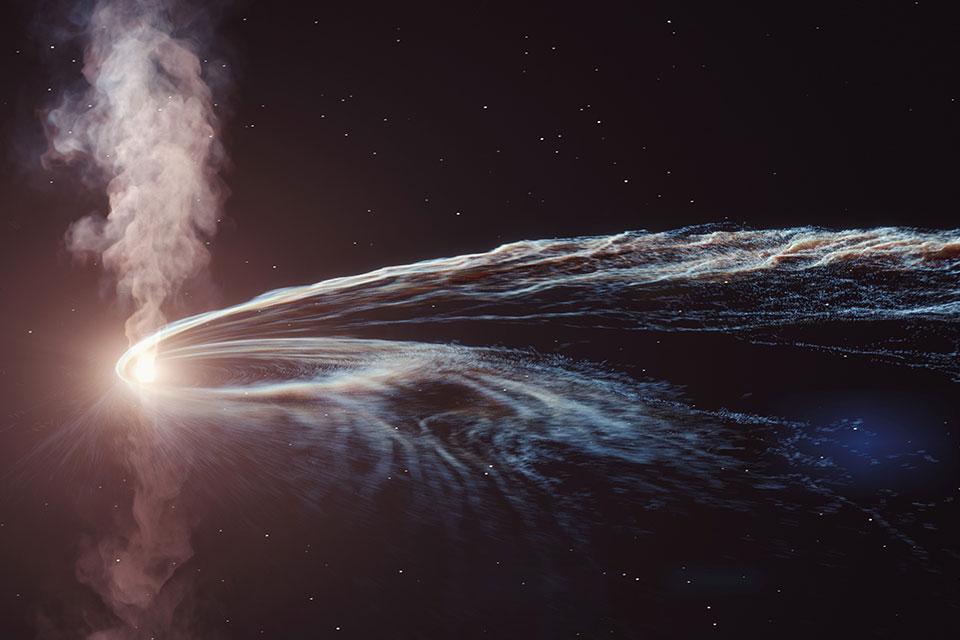Professor Rob Fender from Oxford’s Department of Physics gathered and interpreted radio observations that helped an international collaboration of scientists discover a gigantic cosmic particle accelerator.
The group, led by DESY scientist Robert Stein, traced a subatomic particle – a neutrino – back to a shredded star torn apart having come too close to the supermassive black hole at the centre of its home galaxy. It is the first particle that can be traced back to such a so-called tidal disruption event and provides evidence that these little understood cosmic catastrophes can be powerful natural particle accelerators. The team’s findings have been published in Nature Astronomy.
While half the star's debris was flung into space, the other half settled on a swirling accretion disc around the black hole. Before plunging into oblivion, the matter from the accretion disc gets hotter and hotter and shines brightly and this glow was first detected by the Zwicky Transient Facility (ZTF) on Mount Palomar in California on 9 April 2019.
Energetic neutrino
Half a year later, on 1 October 2019 the IceCube neutrino detector at the South Pole registered an extremely energetic neutrino from the direction of the tidal disruption event. ‘It smashed into the Antarctic ice with a remarkable energy of more than 100 teraelectronvolts,’ says co-author Anna Franckowiak from DESY, who is now a professor at the University of Bochum. ‘For comparison, that's at least ten times the maximum particle energy that can be achieved in the world's most powerful particle accelerator, the Large Hadron Collider at the European particle physics lab CERN near Geneva.’
The extremely lightweight neutrinos hardly interact with anything and are often referred to as ghost particles. So, even catching just one high-energy neutrino is already a remarkable observation. Analysis showed that this particular neutrino had only a one in 500 chance of being purely coincidental with the TDE. The detection prompted further observations of the event with many instruments across the electromagnetic spectrum, from radio waves to X-rays.
Valuable evidence
‘This is the first neutrino linked to a tidal disruption event, and it brings us valuable evidence,’ explains lead author Stein. ‘Tidal disruption events are not well understood. The detection of the neutrino points to the existence of a central, powerful engine near the accretion disc, spewing out fast particles. And the combined analysis of data from radio, optical and ultraviolet telescopes gives us additional evidence that the TDE acts as a gigantic particle accelerator.’
A tidal disruption event coincident with a high-energy neutrino, R Stein et al, Nature Astronomy, 22 February 2021

